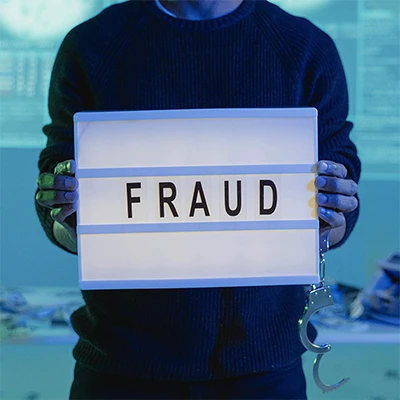Protecting Your Assets: Trademarks vs Copyright vs Registration

As a business owner, your intellectual property is your lifeblood, so you want to make sure you protect it. But how? Here’s what you need to know to protect your brand.
Business Name Registration
When you start a business, you may be required to register the business name with a state-run regulatory body as part of obtaining a certificate to do business. Registering a business name in your state only allows you to claim the business name in that state, not nationwide, and it does not give you any trademark rights, so another party might be able to force you to change your business name if it infringes on their trademark.
If you are operating a sole proprietorship under a name that is different from your own, or a business under a name other than the name of the parent company, you may be required to apply for a DBA (Doing Business As), which specifies who is actually running the business.
Domain Name Registration
When you want to create a website for your business, you’ll need to choose and register a domain name to use in your URL.

A domain name should be simple; easy to remember, type, and say; and preferably be related to your company business name, and/or the products or services it provides. Use WHOIS to determine if a domain name is already registered. If not, register it quickly. It may not be available the next time you check.
You must register a domain name for at least a year, and it must be renewed before it expires, or else someone else can register it. (Google famously let its domain expire in 2015, and an enterprising former Google employee bought it for $12. Best part? He used Google Domains to do it.)
Registering a domain name does not give you any trademark rights, so if you register a domain name that infringes on another entity’s trademark rights, you might be required to give it up.
Trademarks

A trademark is a word, phrase, symbol or design that identifies goods or services that come from a particular source (i.e., you or your business). It offers nationwide protection for the brand name and logo that you use on products you sell or services you offer.
To see whether a mark is available, you can do a free trademark search on the Trademark Electronic Search System (TESS) run by the United States Patent and Trademark Office (USPTO).
Your trademark rights come from actual use of your chosen mark, and they do not expire—as long as you continue to use the mark, your trademark rights are protected. To protect your rights, be sure you use your mark in a consistent way that is unique to your brand. A few years ago, yoga apparel company Lululemon was denied a trademark for a large version of its white-on-red wave design because it was deemed too unlike its trademarked logo and therefore strictly decorative.
Trademark Registration

You do not have to register a trademark, but doing so does give you additional trademark protections within the U.S., including a legal presumption of ownership, and the exclusive right to use the mark. However, not every mark is registrable.
The USPTO may refuse to register a mark if it is too similar in appearance, meaning, or sound to another registered mark in a similar industry, and therefore is likely to cause confusion. On the other hand, two identical marks can both be registered by separate companies if the goods and services they provide are so different that they could never be confused, and providing neither of the marks are so well-known that to use a similar one, even in an unrelated industry, would cause confusion.
In general, the more distinctive a mark is, the more protectable it is. The USPTO may also refuse to register a mark if it is “weak,” meaning too difficult to protect. Weak marks include those that are descriptive or generic. A descriptive mark is weak because it can’t be unique to your products and services—anyone with similar products could use the same term to describe them, like calling a fast-food restaurant at Atlanta “Atlanta’s Best Burgers.” The USPTO will also not trademark generic words to represent a business, like “bicycle” for a bicycle store or “ice cream” for an ice cream parlor, and generic trademarks almost never hold up in court.
The strongest mark types are fanciful (made-up words such as Pepsi, Clorox, Spotify, and Etsy), followed by arbitrary (real words used to represent something totally unrelated to their meaning, like Amazon, Google, Apple, and Caterpillar), and suggestive (words that call to mind the relevant product or service, but do not directly describe it, e.g., Pinterest, YouTube, 7-Eleven).
The USPTO registers marks, but the owner of the mark is responsible for making sure no one infringes their trademark rights. Some common words, including aspirin, thermos, and escalator, used to be trademarked, but because their owners did not enforce that protection, they became generic terms and are no longer protected. (Want to see how enforcement is done? Just try using anything Disney-related without authorization. On second thought, don’t, unless you like lawsuits.)
Copyright

A copyright protects original artistic or literary works, including music, movies, books, plays, and poetry, as well as computer software, code, and website content.
As of 1989, any original work is automatically protected under copyright law, and no one can copy or reproduce it without your permission. You are not required to display the copyright symbol or register your copyright, but doing so provides extra benefits, including acting as a deterrent to copyright infringement, making it easier for the author to profit from the work, and supporting your rights in court in the case of a lawsuit.
Copyright on material authored by an individual lasts the life of the individual plus 70 years. Copyright on works created anonymously, under a pseudonym, or for hire, expires 95 years from the date of publication or 125 year from the date of creation, whichever comes first.
Patents
A patent protects an invention. A new mobile app that has never been patented or published before can be patented, for example, but that patent only protects how the app functions—it does not protect the name of the app (which should be trademarked), or the code that runs it (which is covered by copyright).
If you have just an idea for an app, you can file a provisional patent application, but don’t delay—the USPTO uses a first-to-file standard for awarding patents, so if someone has (or steals) your idea and files a patent first, you’d lost the rights to your own invention.
A Glossary of Symbols
- ™: Used to indicate an unregistered trademark representing goods
- SM: Used to indicate an unregistered trademark representing services
- ®: Used for marks registered with the USPTO
- ©: Used to indicate copyrighted material


